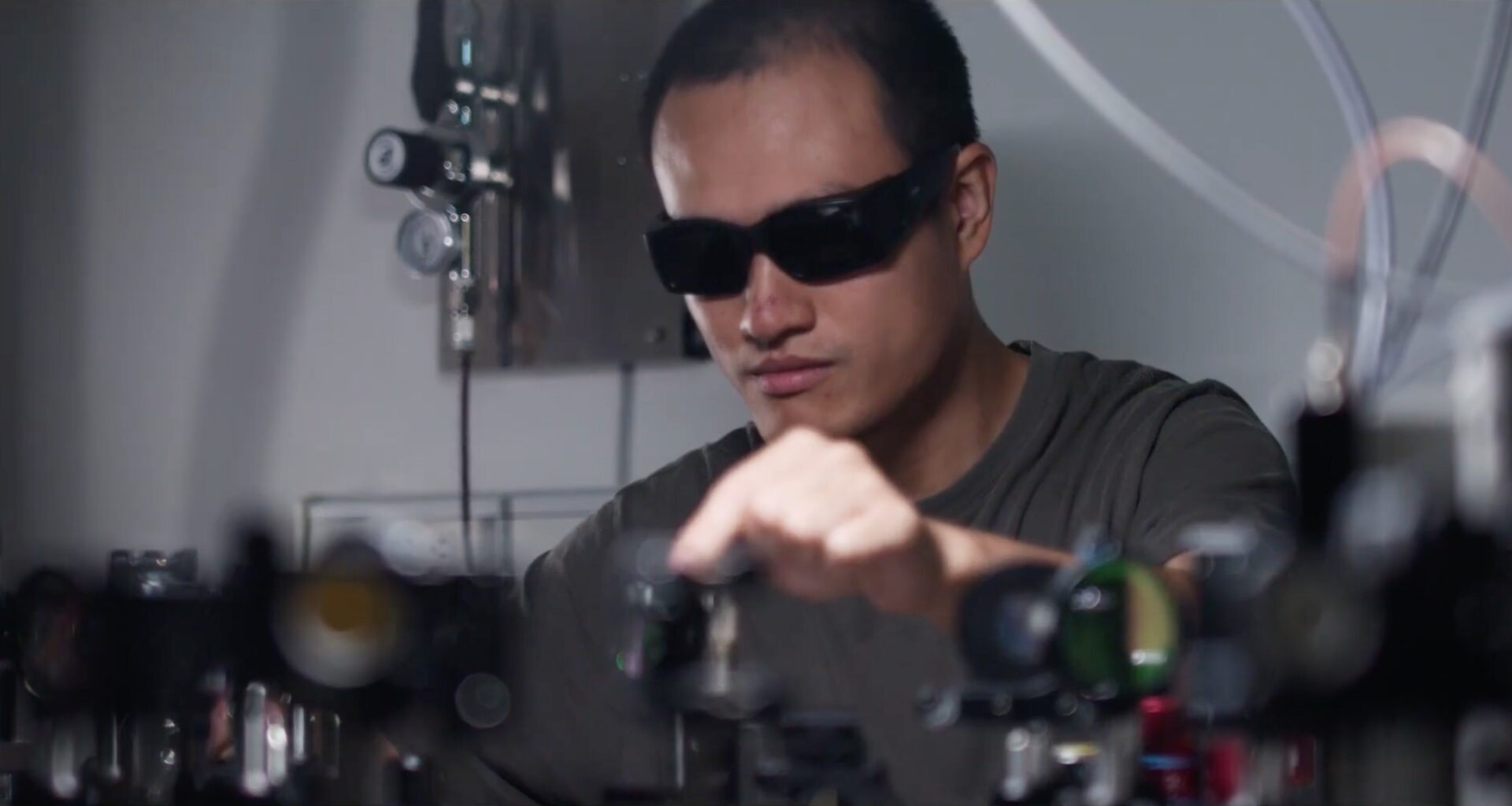A smartwatch that projects holograms on demand. Computer chips that reconfigure themselves in real time.
At Penn Engineering, researchers are developing breakthrough technologies that make displays sharper and more energy-efficient while enabling computers to think and learn at the speed of light.
From the screens on our phones and laptops to the powerful systems that run data centers and artificial intelligence, advances in photonics, the science of using light to carry and process information, are at the heart of a technological shift that is reshaping how we live, work and connect.
Two innovations showcase how these advances are moving from the lab into the real world, with the potential to redefine the future of both everyday devices and large-scale computing systems.
A new kind of low-power display
Conventional displays, like the LCDs used in flat-screen TVs or OLEDs used in smartphones, typically rely on continuous backlighting and relatively large pixel pitches (i.e., the distance between the points of light). That limits efficiency, visibility and clarity in bright environments. They also drain a lot of power because they rely on constant backlighting or self-lit pixels, even just to show a still image.
To address these issues, Marc Miskin, PhD, assistant professor of electrical and systems engineering at Penn Engineering, and David Gonzalez-Medrano, a PhD candidate in electrical and systems engineering at Penn Engineering, have developed an invention that replaces traditional pixel structures with tiny voltage-tunable optical resonators.
You can think of these “resonators” as tiny light-traps. Once light is inside the trap, you can change its color by adjusting the amount of electricity you send through it.
In Misken and Gonzalez-Medrano’s design, each resonator functions as an individual pixel — so small it rivals the size of a red blood cell — capable of reflecting and controlling light directly. This allows the display to deliver sharper detail while using far less energy, and because it is reflective rather than backlit, it stays clear even in bright sunlight.
The applications of this technology are far-reaching.
Imagine an e-reader with crisp, vivid images visible in all lighting conditions, or a smartwatch that delivers holographic projections without draining its battery. And because the system operates at such low voltages, it opens the door to sustainable, long-lasting devices that deliver far more performance per unit of energy than today’s displays.
Even better news: This technology is currently available for licensing and partnership opportunities for those who want to develop it further (learn more here).
The reprogrammable photonics chip that learns at the speed of light
Penn Engineering researchers are also developing ways to use light itself to process information, paving the way for faster and more efficient information processing.
Computing — the process of using computers to process data, run instructions, and turn information into useful results — traditionally relies on electrons moving through silicon chips. However, as data demands rise and artificial intelligence becomes central to daily life, electronic systems are facing the physical limits of miniaturization and running the risk of overheating.
Photonics offers a possible solution. Compared to electrical signals, information encoded in light can
- Travel faster
- Carry many streams at the same time
- Retain more energy
Unfortunately, most photonic processors require lithography, a complex and expensive process that etches permanent circuits onto silicon, which makes them costly and difficult to adapt. To combat this, Liang Feng, PhD, professor of materials science and engineering at Penn Engineering, and Tianwei Wu, PhD, postdoctoral researcher in the Feng Lab, invented a reprogrammable photonics processor that avoids lithography altogether.
Instead of relying on permanently etched circuits, this technology uses a uniform semiconductor slab whose optical properties can be dynamically reconfigured, making it much cheaper and easier to scale than traditional photonic processors. You could think of it like an orchestra swapping melodies, reshaping light to play whatever “song” the program demands.
The architecture supports bandwidths up to around 14 terahertz — far exceeding most electronic systems — while maintaining a compact footprint. For context, a typical laptop processor runs at only a few gigahertz (thousands of times lower), and even cutting-edge data center interconnects usually top out in the low hundreds of gigahertz.
The chip can also fine-tune itself for different tasks, like running parts of an AI program, by adjusting how light moves through it. In other words, it can “learn” and improve directly with light, without needing slower electronic systems to retrain it. This on-chip training could make AI systems faster and more efficient by allowing the processor to learn directly from new data in real time, whether it be in data centers, smart devices or even autonomous vehicles. Learn more about this technology and opportunities for licensing and partnership here.
What’s next for photonics
Together, these innovations show how Penn Engineering is leading the way in turning photonics into practical solutions for everyday life and advanced computing.
From displays that are clearer and more energy-efficient to processors that can learn at the speed of light, they highlight the incredible potential of light-based technologies. The researchers behind these advances continue to push the boundaries of what photonics can do, and with the assistance of the Penn Center for Innovation (PCI), their discoveries are being translated from the laboratory into products, companies, and solutions that will define the next era of innovation.Learn more about PCI’s diverse portfolio of technologies and the latest innovations at Penn here.
